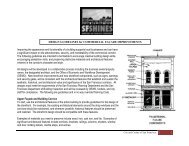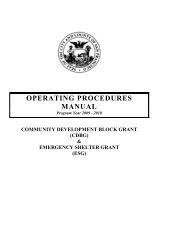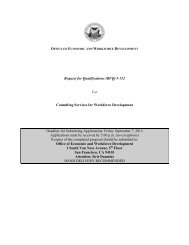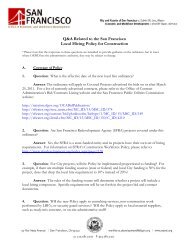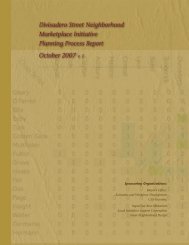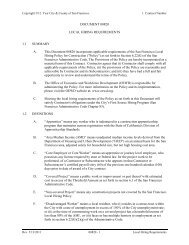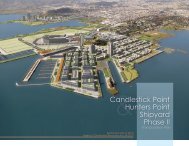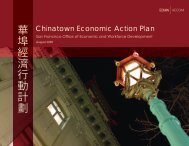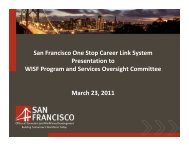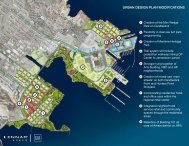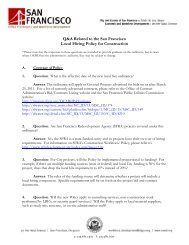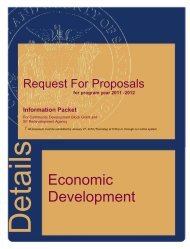The America's Cup: Economic Impacts of a Match - Bay Area Council
The America's Cup: Economic Impacts of a Match - Bay Area Council
The America's Cup: Economic Impacts of a Match - Bay Area Council
You also want an ePaper? Increase the reach of your titles
YUMPU automatically turns print PDFs into web optimized ePapers that Google loves.
most, a number <strong>of</strong> locations around the <strong>Bay</strong> could <strong>of</strong>fer attractive venues, including Alameda (adjacent to the<br />
aircraft carrier Hornet) or Richmond. In Richmond's case, the Craneway Pavilion, a 1931 Ford plant recently renovated<br />
as a 525,000 square-foot structure housing <strong>of</strong>fices and large public spaces, fronts 600 feet <strong>of</strong> dock capacity<br />
facing toward San Francisco.<br />
Port <strong>of</strong> San Francisco<br />
Bringing the <strong>Cup</strong> to San Francisco presents a major<br />
opportunity for the Port. At the front end, the Port<br />
will incur up-front costs. On balance, however, the<br />
net gains to the Port promise to be substantial. This<br />
could take two primary forms: visitor revenue and infrastructure.<br />
Revenue. Approximately 80% <strong>of</strong> all visitors to the city utilize facilities on Port-owned property (e.g., the Ferry<br />
Building, Fisherman's Wharf, boat charters, water taxis, and parking), from which the Port earns tenant revenue.<br />
Infrastructure. As with all <strong>America's</strong> <strong>Cup</strong>s, facilities will have to be developed to house the racing syndicates in<br />
the period leading up to and during the race. <strong>The</strong>y are likely to be housed on rehabilitated pier structures along<br />
<strong>The</strong> Embarcadero. Rehabilitation <strong>of</strong> the specific pier or piers selected for the site (most likely Piers 30-32 and<br />
50) may help address a specific challenge faced by the Port <strong>of</strong> San Francisco − a $2 billion capital expenditure<br />
requirement to address accumulated deferred maintenance, prevent the further deterioration <strong>of</strong> the structures,<br />
and enable the constructive reuse <strong>of</strong> some <strong>of</strong> its aging piers. <strong>The</strong> estimated cost to bring Piers 30-32 up to code is<br />
between $40 million and $60 million. <strong>The</strong> estimated cost <strong>of</strong> bringing Pier 50 up to code is also in the $40 million<br />
to $60 million range.<br />
From an investment standpoint, the <strong>Cup</strong> could present the Port with a unique opportunity to engage private capital,<br />
through the organizing committee, in the redevelopment <strong>of</strong> one or more piers, along the lines <strong>of</strong> the model<br />
used to develop AT&T Park. Securing private investment to preserve and renovate the piers used for the <strong>Cup</strong> could<br />
alleviate the pressure on the Port’s capital budget, thereby freeing resources for other priorities. Given the economic<br />
benefits at stake, some level <strong>of</strong> public financing may be appropriate as well. Whatever financing method is<br />
ultimately chosen, the <strong>America's</strong> <strong>Cup</strong> would fast forward the renovation and development <strong>of</strong> the piers in question.<br />
14



